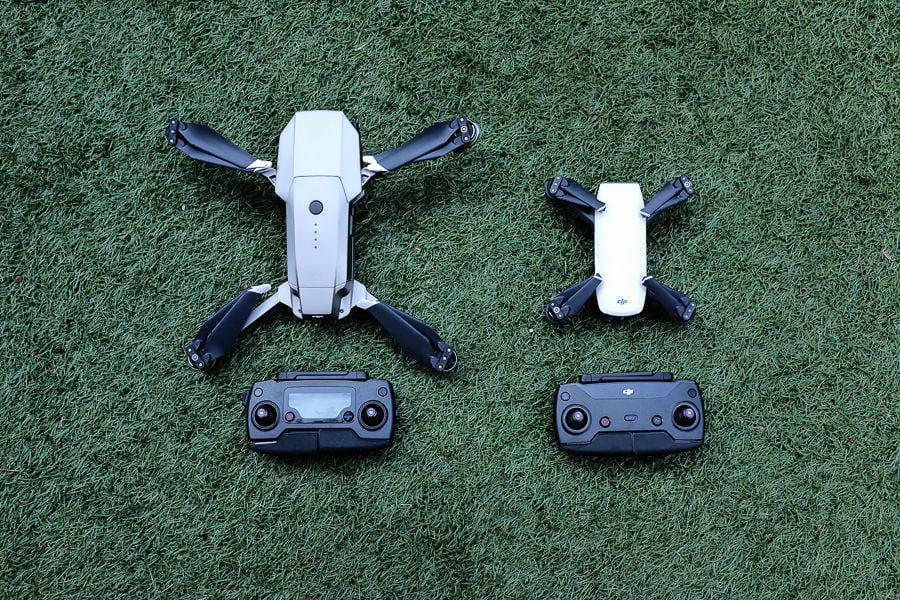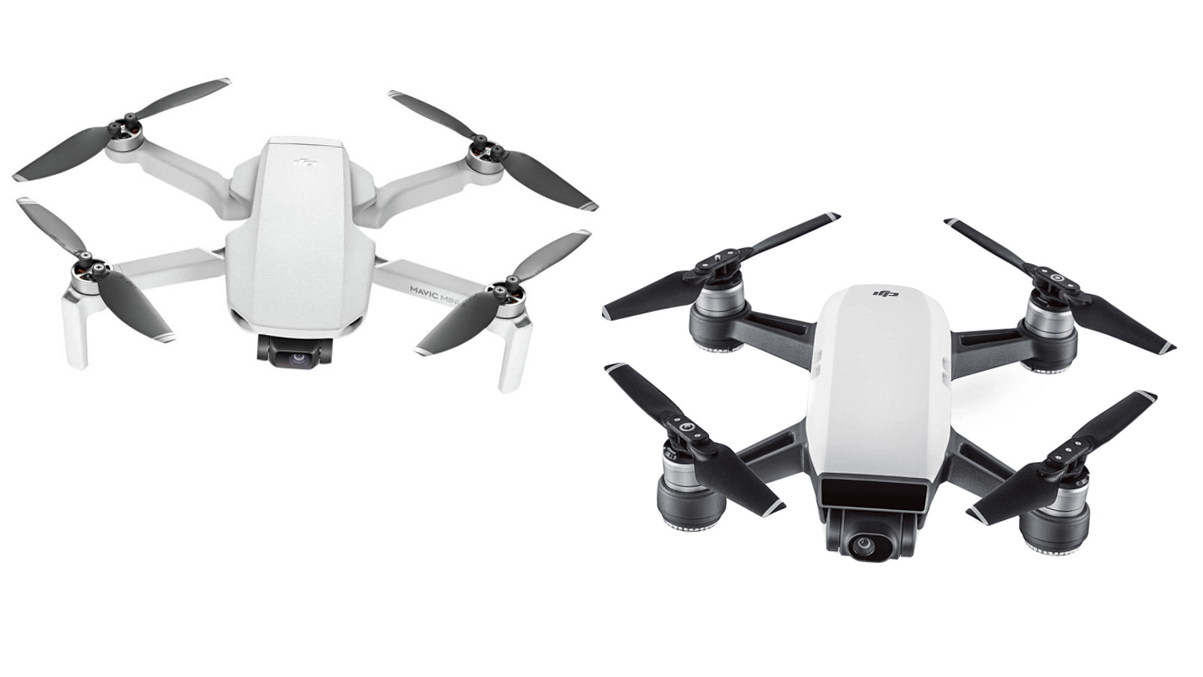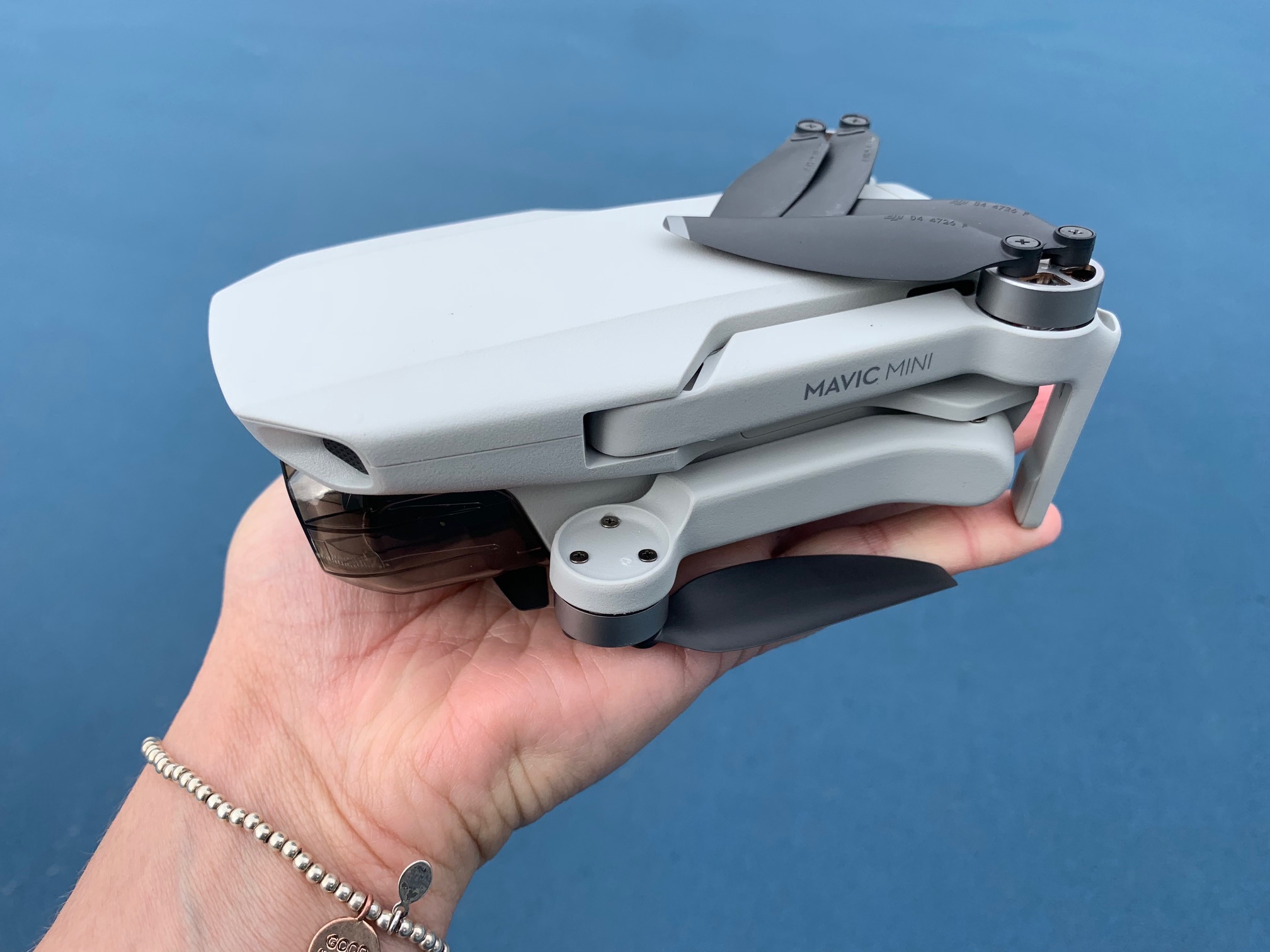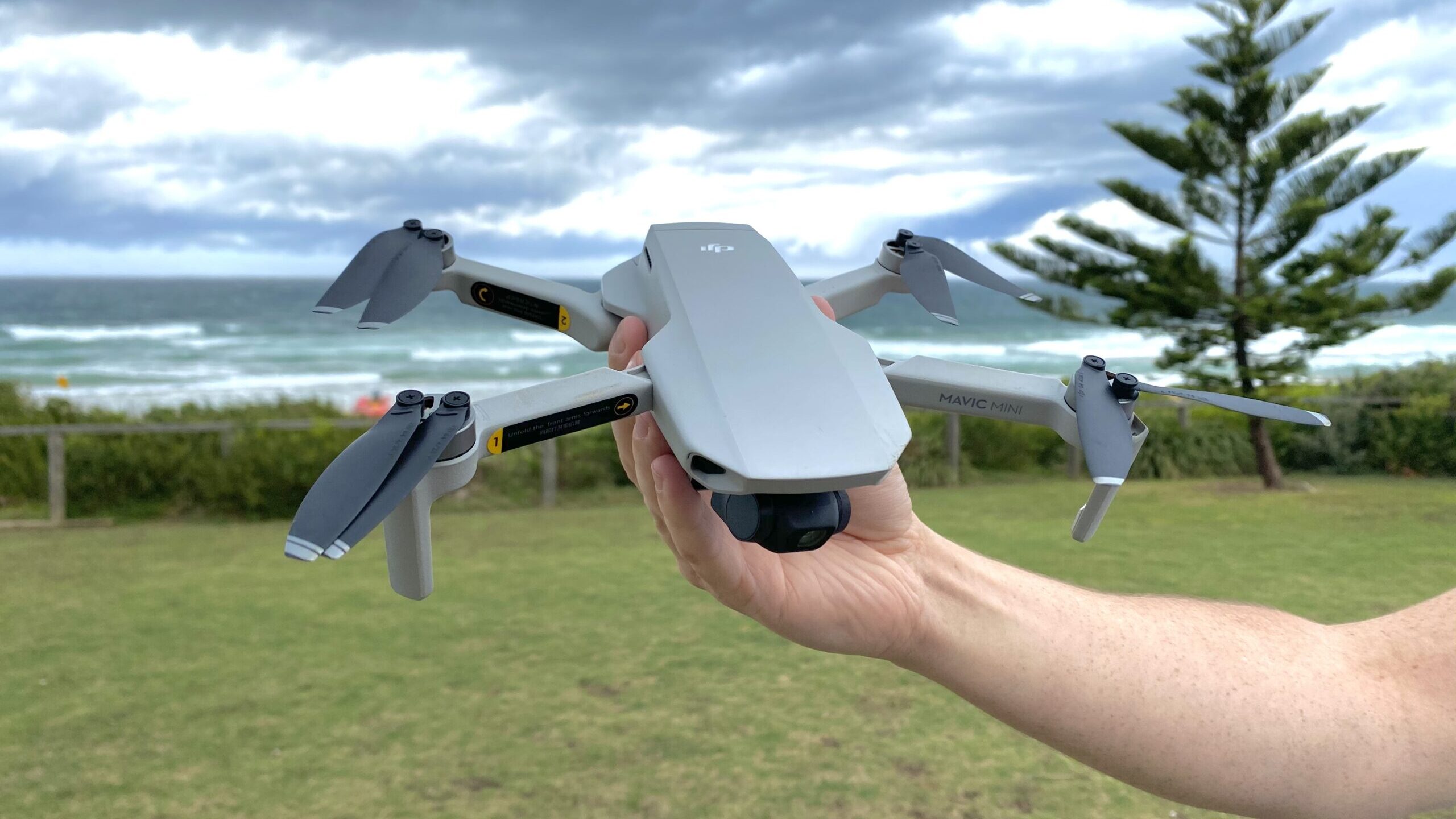
Mavic Mini vs Spark: Which DJI Drone is The Best Buy 2024?
Which financial plan valued DJI drone is ideal? In our Mavic Scaled down versus Flash go head to head we make sense of the multitude of key contrasts. In this DJI Mavic Smaller than usual versus Flash examination guide we assist you with picking the most ideal choice from the two famous minimal expense camera drones from market pioneers DJI - and assist you with tracking down the best cost.
The DJI Flash and the DJI Mavic Small robots address DJI's two shockingly various ways to deal with the shopper market, and which one outmaneuvers suits you relies more upon the assignments you have as a top priority for it than which was generally as of late brought to showcase.
In wide brush terms, the Flash addresses a more seasoned hopeful time in the development of the robot market, introducing drones as other-worldly carefree cameras which can floating around your exercises and store the features onto capacity media. The Mavic Little appears rather to be a cutting edge drone on a tight spending plan, concerning weight and money. It has extraordinary battery duration, and accompanies a regulator very much like a bigger robot, yet every one of the elements are stripped down and the weight can be a test in the breeze.

Time has elapsed between the send off of the Flash and the Mavic Smaller than usual, and not simply regarding the tech; drone guidelines have shown up in a large part of the world which limit robots to under 250 grams (8.8oz) before the proprietor is expected to sign a register with their nearby flying power (FAA, CAA and so on), implying that the Mavic Scaled down's 249g drop weight was maybe the main thing on its spec sheet.
However, for a little minority, particularly those suspicious of government organizations, that will be reason to the point of picking the Mavic Smaller than normal (ideally they won't rest their tin foil caps on the controller). Generally kindly read on to see which truly offers what you need.
Mavic Mini vs Spark: Build & Design

Why you can believe Advanced Camera World Our master analysts go through hours testing and looking at items and administrations so you can pick the best for you. Figure out how we test.
The Mavic Smaller than expected is very much named - it looks and creases like a scaled down form of the Mavic Air 2, which seems to be a more reduced Mavic 2. That is not something terrible; they're all attractive airplane and (when you become acclimated to the grouping) overlay down to an exceptionally viable size.
The Smaller than usual can serenely go in a coat pocket, however defensive capacity is firmly suggested where propellors are concerned, and you'll likewise have a controller to care for.
Regardless of a more modest slanting range, the Flash may be viewed as a touch more thick in light of the fact that its edge is unbending. The propellors in all actuality do overlap far removed, yet not the arms, which thusly is the reason they're so squat.
The Mavic Small scale's arms really do twist a little when opened, an analysis which can't be evened out at the Flash. That flex, however, doesn't appear to be an issue - assuming anything it's likely great would it be a good idea for you experience a crash.
That is somewhat more probable with the Small, as well, since it has no impact recognition framework put something aside for descending landing sensors. The Flash can do that and "see" up to 5 meters (16ft) forward. With that it can quit flying toward an article instead of hit it, as well as pull neither here nor there following. Shamelessly the Mavic Scaled down's body has two vents that seem to be a binocular vision framework yet, indeed, they're not.
Mavic Mini v Spark: Speed & Maneuverability

The two robots are intended to be utilized close to loved ones, so they have a practically amicable presence, and both proposition separable propellor monitors for added security. Neither airplane, notwithstanding, are appropriate for blustery circumstances - working past a Delicate Breeze on the Beaufort scale isn't suggested.
Flight attributes are comprehensively comparable, since they hail from a similar stable. DJI drones default to 'Mode 2' control through two sticks (or virtual sticks on your telephone screen assuming you work the Flash without the radio regulator). This is not difficult to learn, particularly as both have GPS/GLONASS situating sensors and elevation sensors which intend that, would it be advisable for you let go of the controls, the airplane essentially drifts set up.
At the point when its snag sensors are on, the Flash drops to around 13mph, however at that point again photography and videography seldom requires rapid flight. Without a doubt the vast majority of the best film you'll get from the Scaled down will be in 'C Mode,' in which the robot purposely lessens to an extremely low speed to catch lovely realistic shots.
Mavic Mini v Spark: Battery life
Assuming you knew about DJI's robots, you'll realize that most are purported "Savvy Flight batteries," with an underlying one-press charge meter (4 LEDs). This is the more noticeable piece of the knowledge; the batteries likewise screen how long they've been passed on inactive and begin to release to a more secure level following a couple of days.
The DJI Flash deals with this similarly as, based around a 3S (3 cell) LiPo which produces 1,480 mAh from its 95g. The battery check button handily came to from the rear of the robot when that battery is set up, however the plan appears to be superfluously stout, particularly contrasted with the Mavic Smaller than expected.
The Small takes an alternate tac, picking to utilize the comparative Li-particle innovation, improved with the end result of creating 2,400mAh in a 2S game plan. Essentially the whole 100g of this battery pack is dedicated to putting away charge, and there is no battery meter worked in.
On balance, however, the burden of not having self-testing batteries is effortlessly counterbalanced by three things: The Scaled down's batteries have almost two times the flight time, there is an analyzer circuit incorporated into the Mavic Little airframe so you can undoubtedly test the ongoing battery, and the less in fact complex plan makes spare batteries less expensive.
It's likewise valuable that the Mavic Scaled down can go about as a charger when associated with a USB-C power supply, saving money on embellishments you want to go with.
Mavic Mini v Spark: Gimbal
The innovation which separates camera drones from toys isn't really having a camera, however whether the camera is treated with deference. In particular, is the camera safeguarded from the vibrations and sharp inclining and shifting of the fuselage with a controlled gimbal - a gadget sufficiently speedy to make up for all that disagreeable reeling, and furthermore permitting you to shift your shot starting from the horizon to a more ethereal point voluntarily.

Both the Flash and the Mavic Small scale have one, however the Flash's purposes the absolute minimum 2-hub technique and depends on programming and administrator to guarantee there are no brutal left or right turns, while the Little's 3-pivot gimbal makes up for yaw as well.
The initial two hub are by a wide margin and away the most critical, yet having the third is certainly a success for the smaller than expected, and can make video look smoother (particularly on the off chance that the robot is making confounded turns in the shot).
The Mavic Little likewise offers a marginally more noteworthy scope of development, shifting right down to an arrangement view at 90˚ instead of the Flash's 85˚. Likewise, however it's restricted to zero of course, the Mavic Little can shift up to 20˚ up would it be a good idea for you pick.
Mavic Mini v Spark: Control Range
The proportion of transmission distance is certainly not an outright proportion of how far you can fly, yet a sign of the strength of the radio transmission as it very well may be in a level desert with no wind or some other wellspring of radio obstruction. As far as possible on your flight is generally the reach you can hold visual contact with your robot, or 500m, whichever is the lower.
On paper, the two robots are entirely adequate at performing inside the allowed flying reach, however by and by the Mavic Scaled down is more proficient here. Neither ought to be worked a long way from the pilot since both utilize a variation of the Wi-Fi recurrence range which is restricted contrasted with top of the line drone radio frameworks, and dependent upon a lot of obstruction.
The Mavic Smaller than normal should be worked with its controller connected to your telephone as a screen, while the different remote is only discretionary. Utilizing your telephone implies you're reliant upon the strength of its Wi-Fi to arrive at the Flash, which practically speaking carries your reach to a furthest reaches of 100m or less (better than your telephone at the lower part of the nursery, yet entirely not much).
One component just accessible on Flash is 'Gimbal Pitch Following,' since it's possibly on offer when you are NOT utilizing the discretionary controller. With it, the gimbal will shift the camera up or down to effectively match the point you slant your telephone.
The greatest cited scope of these robots will depend where on earth you reside, because of local regulation - utilize the FCC figure for North America, and the CE figure in Europe.
Mavic Mini v Spark: Stills
As far as goal, essentially nothing remains to be isolated these 12-megapixel drones, which likewise both game 1/2.3-inch imaging sensors - particularly in accordance with the thoughtful you could track down in a mid-range cell phone.

Practically speaking the Mavic Scaled down appears to profit from a couple more years refining the handling calculations at DJI, and appears to be less defenseless to overabundance immersion, but neither one of the airplanes catch Crude pictures so photographic artists are extensively in a comparable situation.
You can (and may have to) add ND channels to adapt to extremely brilliant sun, and you ought to be aware of the see you see while making as any blown features will probably remain blown.
To energize your photographs, the Flash utilizes its profundity detecting to offer a still-very cool ShallowFocus choice (at a web-based entertainment cordial 1440x1080 pixels) and sewed displays in even and vertical. Burst and Organizing are additionally on offer, however just 3 edges with 0.7EV inclination.
Mavic Mini v Spark: Video

Experts will ache for 4K or 8K video, however for the sort of purpose these robots are commonly put to higher goal can bring a bigger number of issues than it settles. The Mavic Little's "2.7K" goal is an incredible arrangement on the off chance that your recordings are for the most part shared on YouTube/Instagram and so on - and you'll serenely have the option to slip a 2.7K shot into a 4K alter without anybody spotting it.
The video is sharp and of extremely satisfying quality, however with a sensor this size clearly you'll see some commotion in low light.
The Flash lingers behind, with a constraint of "as it were" 1080P (Full HD) however again this is a completely satisfactory goal for most purposes). The lower bit rate is a disgrace, however at that point there are less pixels and the video is very satisfying quality.
It's really frustrating, given the emphasis on fun selfies and activity, that no higher edge rate choice is accessible - on the Mavic Little up to 60fps is accessible at 1080P which is perfect for altering to slow mo.
Basically the two robots will give you incredible looking clasps, however the video from the Mavic Smaller than expected can slip its direction into a more expert alter (with speed changes and so forth) though the Flash is more about the occasion.
Mavic Mini v Spark: Autonomous Modes

DJI Mavic Mini: QuickShots (Rocket, Dronie, Circle, Helix)
DJI Flash: Palm send off, Palm control, Selfie (make an edge with your hands), Follow, Palm Land, ActiveTrack, QuickShots (Rocket, Dronie, Circle, Helix), TapFly
No self-regarding camera robot will expect aerobatic flawlessness with respect to their pilot so all robots make differing compromise between sensors, handling power and cost to offer pre-modified impacts and subject following elements. In unadulterated equipment terms, the Flash is the better prepared of the pair, with committed object following (or evasion) sensors ready to take over at short proximity.
The two robots offer a choice of 'Quickshots' (15-second impacts like circle (Circle) or zooming out on you (Dronie). The Flash additionally brings what the local area has come to be aware as "Jedi Mode" (or, all the more boringly, signal control). In this, basic hand signals are deciphered as orders to situate the robot or snap a picture. You should be a piece mechanical in certain developments, yet all at once it's effortlessly dominated.
The Flash likewise flaunts ActiveTrack, which follows a subject the robot's product can recognize through the primary camera. It's an extraordinary component, however requires a touch seriously handling snort which, probably, isn't accessible in the lightweight Smaller than normal. The Smaller than expected offers Smooth Movement a sluggish flight mode for having realistic chances which frequently does the trick as far as having the chance, however is in no way, shape or form programmed.
Mavic Mini v Spark: Verdict
Both the Mavic Scaled down and the DJI Flash are exceptionally valuable robots, however for somewhat various clients. On the off chance that you're searching for the better-quality result and, as most, you feel a regulator ought to be essential for the bundle then there is no contending with the Mavic Small. Serious vloggers who have companions close by to catch their recording won't lament the higher video goal or expanded battery time.

The Flash, however, offers a captivating scope of shrewd elements that could make it a superior sidekick on, for instance, a vacation. 1080P video offers sufficient detail for a large portion of us to remember charming minutes, Jedi mode is loads of tomfoolery, the mechanized elements feel like extraordinary worth, and the edge is pleasantly strong.
The Mavic Small scale is somewhat hamstrung by DJI's decision to supplant its product with a more inadequate telephone application, eliminating helpful highlights like the consolidated battery meter and return distance cautioning outline. It's a minor misfortune, yet at the same time a disgrace.
The embodiment is that the Small enjoys the benefits of being fresher, and under the enchantment 250g, so it appears to make a decent correlation with the Flash for some, however in the event that the two had emerged simultaneously it'd be the lower model. The Flash's additional highlights could possibly be balanced by video goal for some makers, pursuing this a particularly private decision; yet nor is off-base.


